The Amazon Jungle in Macas
A weekend on the other side of the Andes with my Ecuadorian family
I spent three months in Ecuador with Fernanda. We mainly stayed in Riobamba, the city where her family lives. From there, we travelled to other cities and parts of the country. We visited Quito, Baños, Quilotoa Lake, and Cuenca.
One of our first trips was a family trip to Macas to visit Fernanda’s brother-in-law's family. We left on a Friday afternoon and returned on Sunday evening, we visited Macas on a heat wave, with temperatures above 30°C, which felt strange coming from the Andes.
From Riobamba, it took more than 3 hours by car to reach Macas, we had to cross the Andes and then descend to the Amazon jungle. We stopped at the top of the Andes to admire an amazing landscape.
Laguna Negra is a strikingly beautiful and mystical lake located in the high Andes of Ecuador. Known for its dark, mirror-like waters, the lake is surrounded by rugged paramo (high-altitude grasslands), rocky peaks, and diverse flora and fauna. Its mysterious beauty, along with the quiet solitude of the landscape, makes Laguna Negra a fascinating destination for nature lovers and adventure seekers.
The name Laguna Negra (Black Lagoon) derives from the lake's deep, dark waters, which often appear almost black due to their clarity and the shadows cast by the surrounding mountains. The lake's high altitude and mineral content also contribute to its striking appearance, which can shift dramatically with changes in light and weather, reflecting the surrounding peaks and skies like a natural mirror.
Macas is a small, charming city located in the southeastern part of Ecuador, in the province of Morona Santiago. Nestled in the eastern foothills of the Andes and bordering the Amazon rainforest, Macas is often referred to as the "Esmeralda Oriental" (Eastern Emerald) due to its lush green landscapes, pristine rivers, and biodiversity.
Macas is situated in a beautiful, diverse region where the Andes meet the Amazon, offering a unique mix of mountain scenery and dense jungle. The city is located at an elevation of about 1,050 meters (3,445 feet) above sea level, making the climate temperate and pleasant throughout the year.
The area is rich in natural beauty, with rivers like the Upano, which runs near the city, and the Pastaza River basin offering opportunities for eco-tourism, rafting, kayaking, and fishing. The landscape is also home to waterfalls, such as the well-known Cascada de la Virgen.
Macas is a cultural hub for indigenous Shuar and Achuar communities, whose presence in the region dates back thousands of years. The Shuar people are known for their rich traditions, including their craftsmanship, shamanism, and famous "tsantsa" (shrunken head) practices, though this is now part of their historical legacy rather than current practice. The city is a gateway for learning about and experiencing these indigenous groups' cultures, beliefs, and lifestyles.
On Saturday we decided to have an excursion to one of the many waterfalls in the area. After breakfast, we did a scenic drive and a short hike through lush Amazonian vegetation to reach Cascada Yantza Musap. The trail leading to the waterfall was an opportunity to immerse in the vibrant ecosystem, with towering trees, ferns, and orchids lining the path.
Cascada Yantza Musap, located in the Sangay region near Macas, is a breathtaking waterfall nestled in the eastern foothills of the Andes, bordering the Amazon rainforest. The region itself is renowned for its natural beauty, biodiversity, and the nearby Sangay National Park, a UNESCO World Heritage site.
Cascada Yantza Musap has a tranquil and picturesque setting. The waterfall is not only a natural wonder but also a serene spot, we enjoyed the calm and beauty of the Amazonian environment. The water cascades down into a crystal-clear pool at the bottom, perfect for cooling off after a hike, and the hot weather.
The region surrounding Cascada Yantza Musap, like much of the Sangay area, is part of Ecuador’s rich Amazon rainforest. This area is home to an abundance of wildlife, including exotic bird species like parrots and toucans, as well as a variety of mammals, reptiles, and amphibians. The biodiversity of the area is a major draw for eco-tourists and nature enthusiasts.
In terms of plant life, the forest around the waterfall is home to a wide variety of tropical plants, including bromeliads, orchids, and large ferns, which thrive in the moist, humid climate.
Fernanda’s brother-in-law's parents spend Sundays going to church and then having breakfast at the market, so we decided to follow them. I couldn’t wait to visit the market and have breakfast there. This situation reminded me of when I was in Kuala Lumpur, and I was doing the same, the environment was quite similar.
Although the market is very small, it is not the only one in the city. We bought some food for lunch and then went to another market to buy plants to bring to Riobamba.
We spent the rest of the morning in the garden near the swimming pool, enjoying the relaxed mood of the environment, after lunch we packed and started our way back to Riobamba. It was a great family weekend, I loved to spend time with Fernanda’s family and discover this city that is not well known by tourists.
See you soon
Flavio

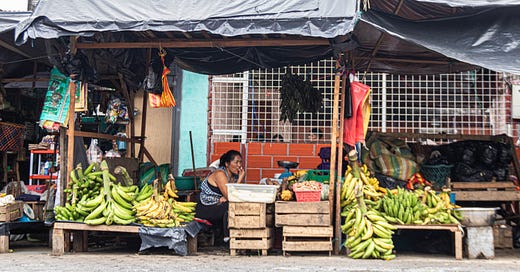


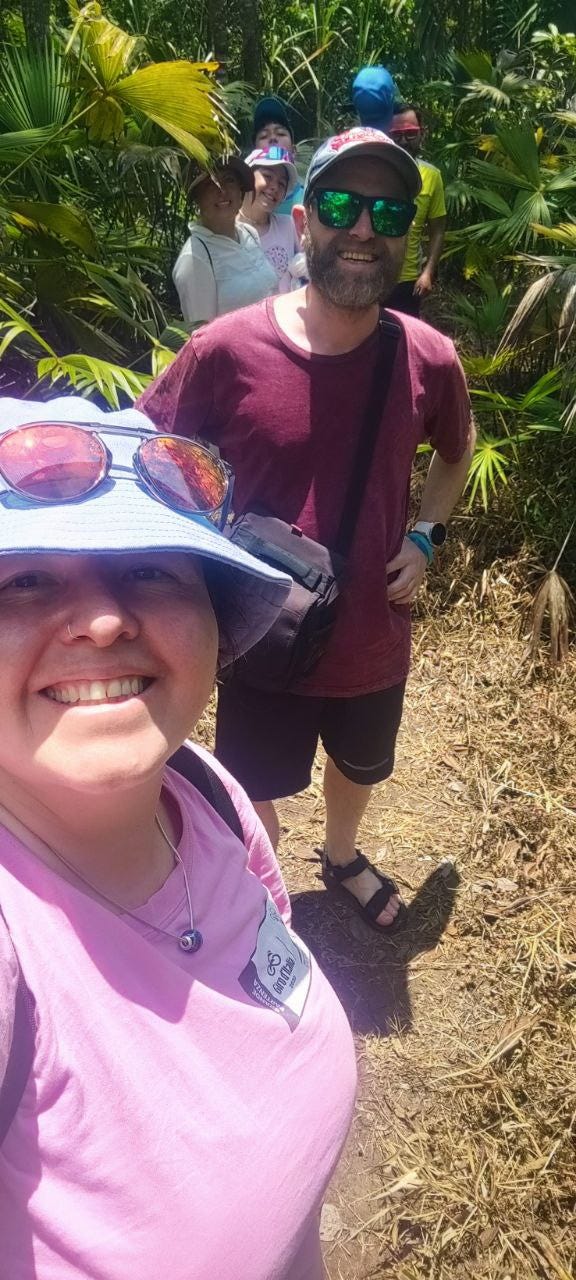


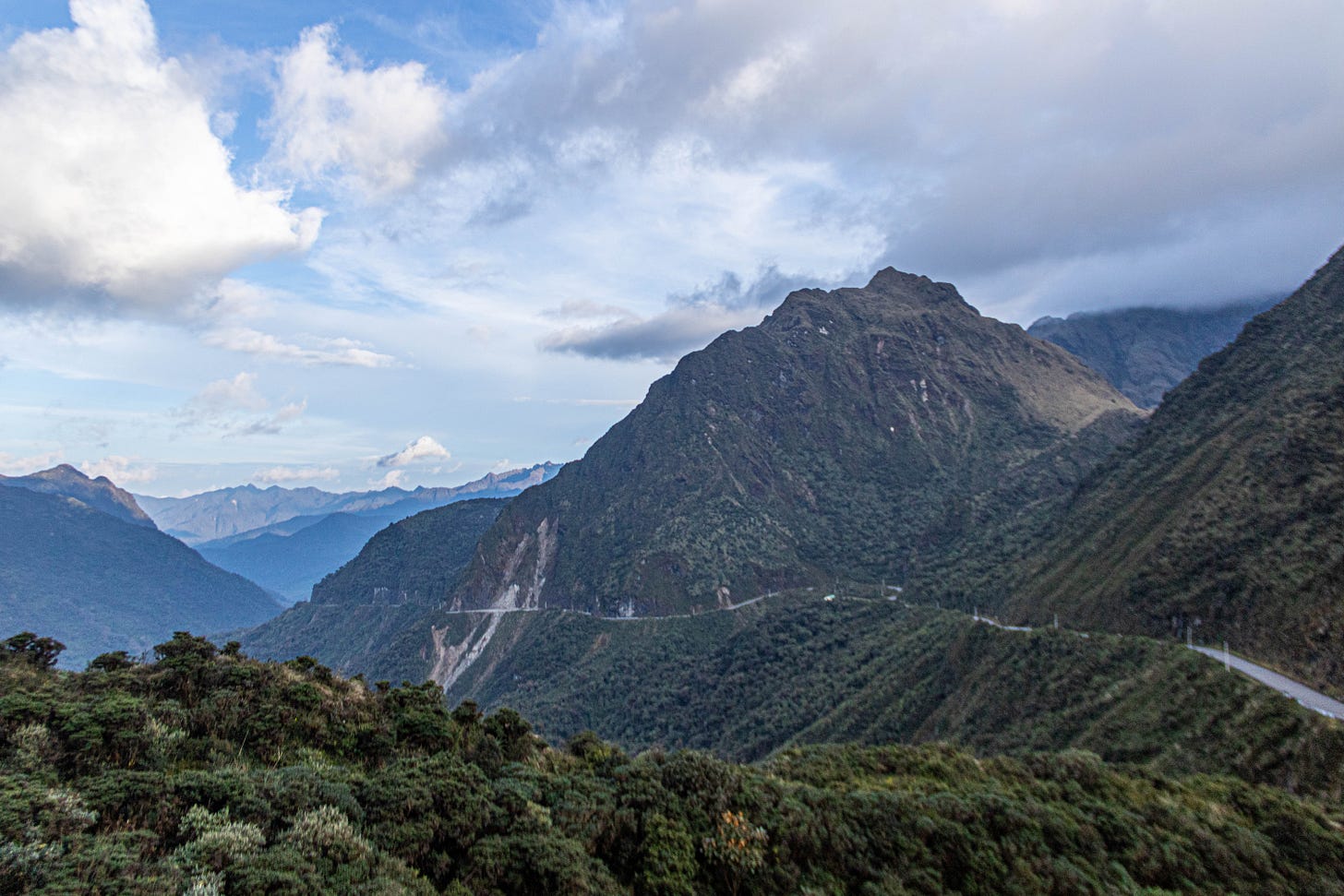
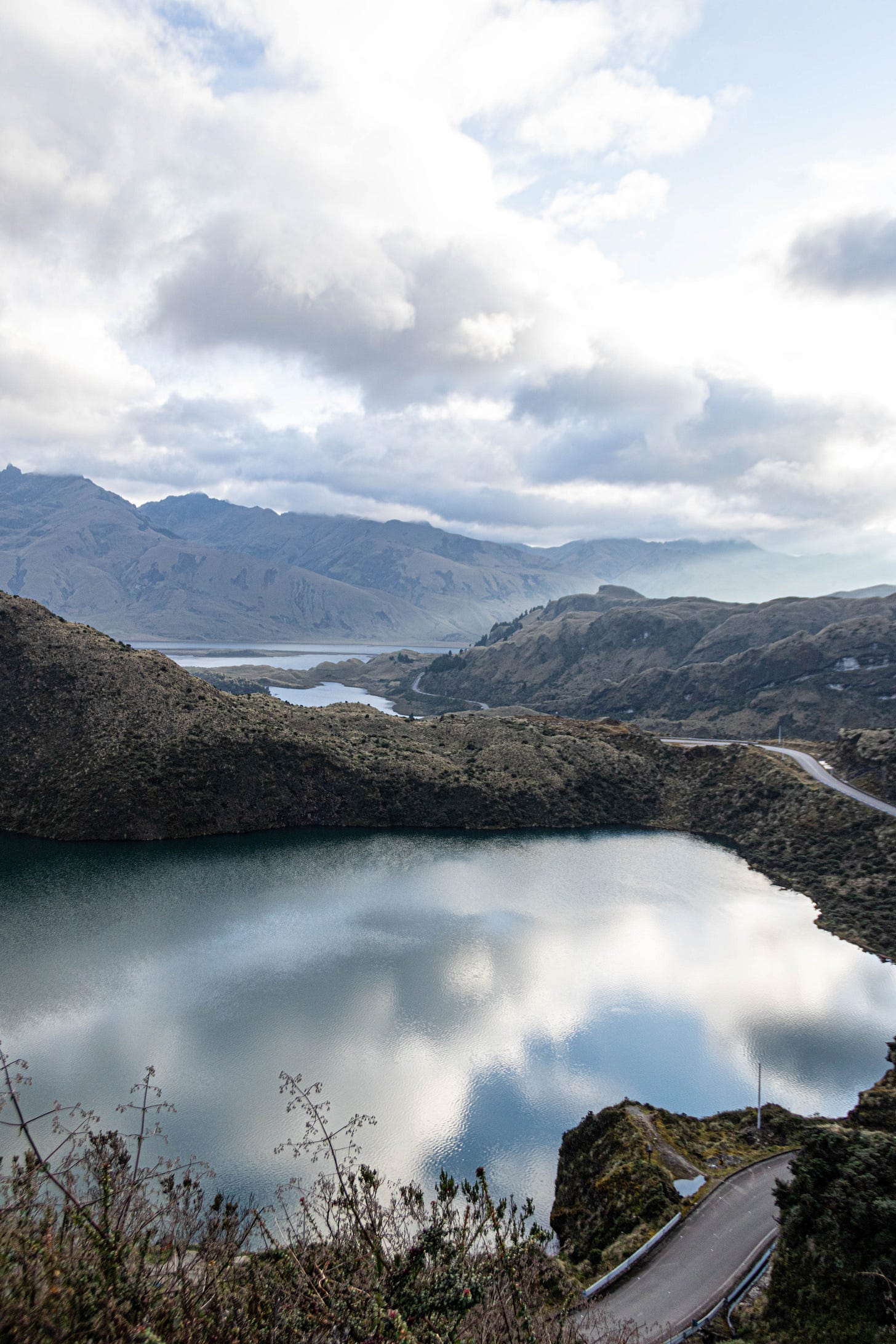
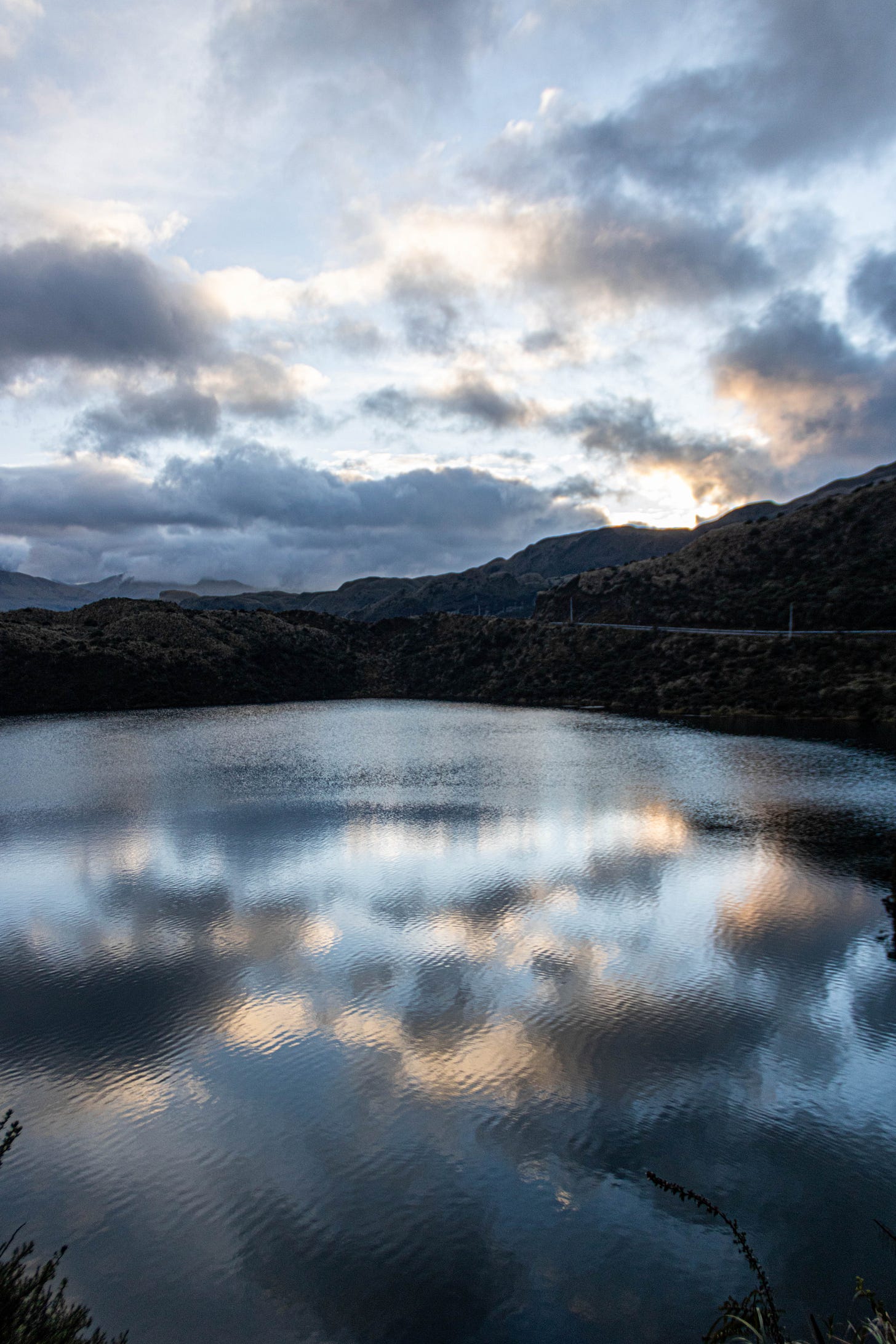
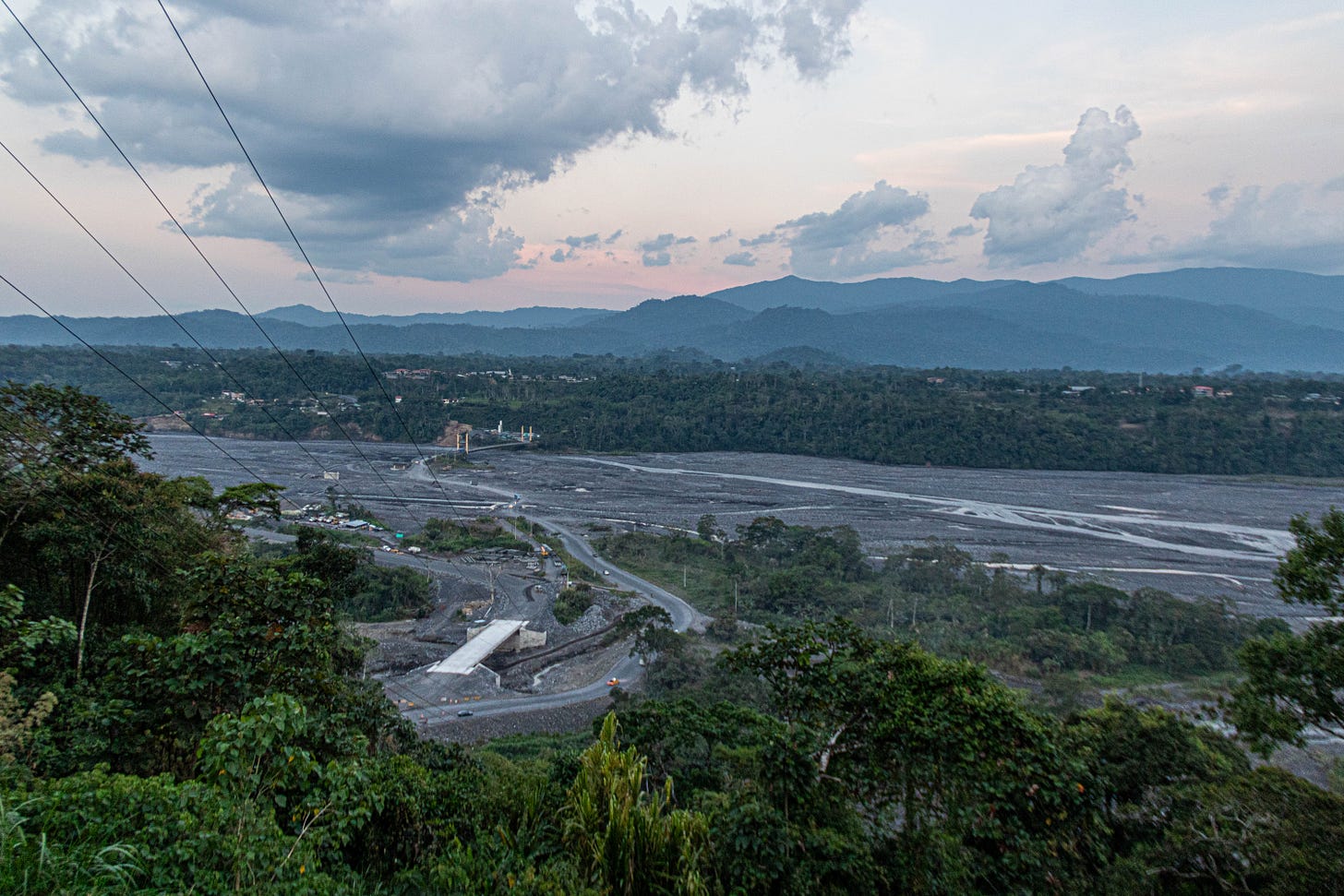
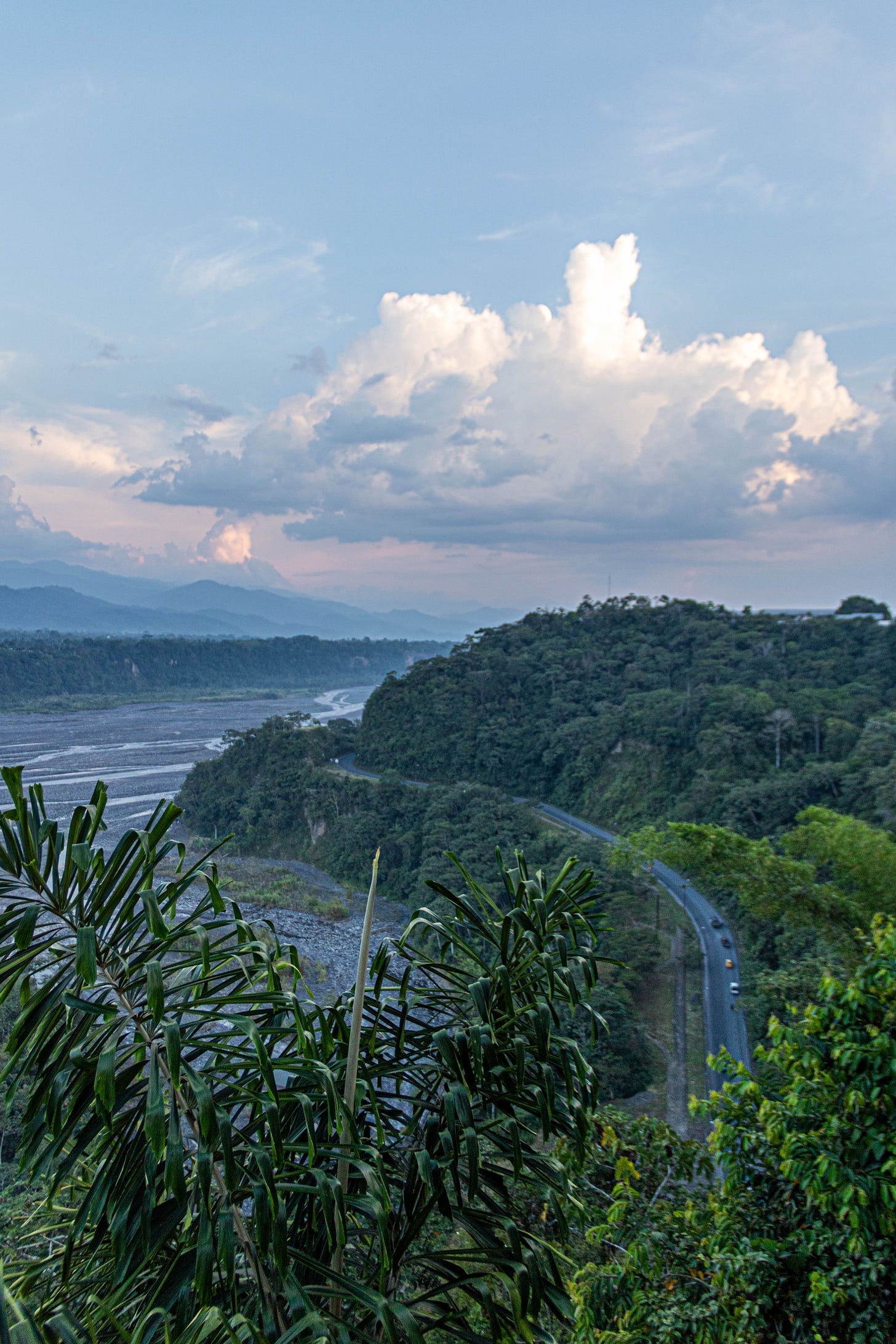
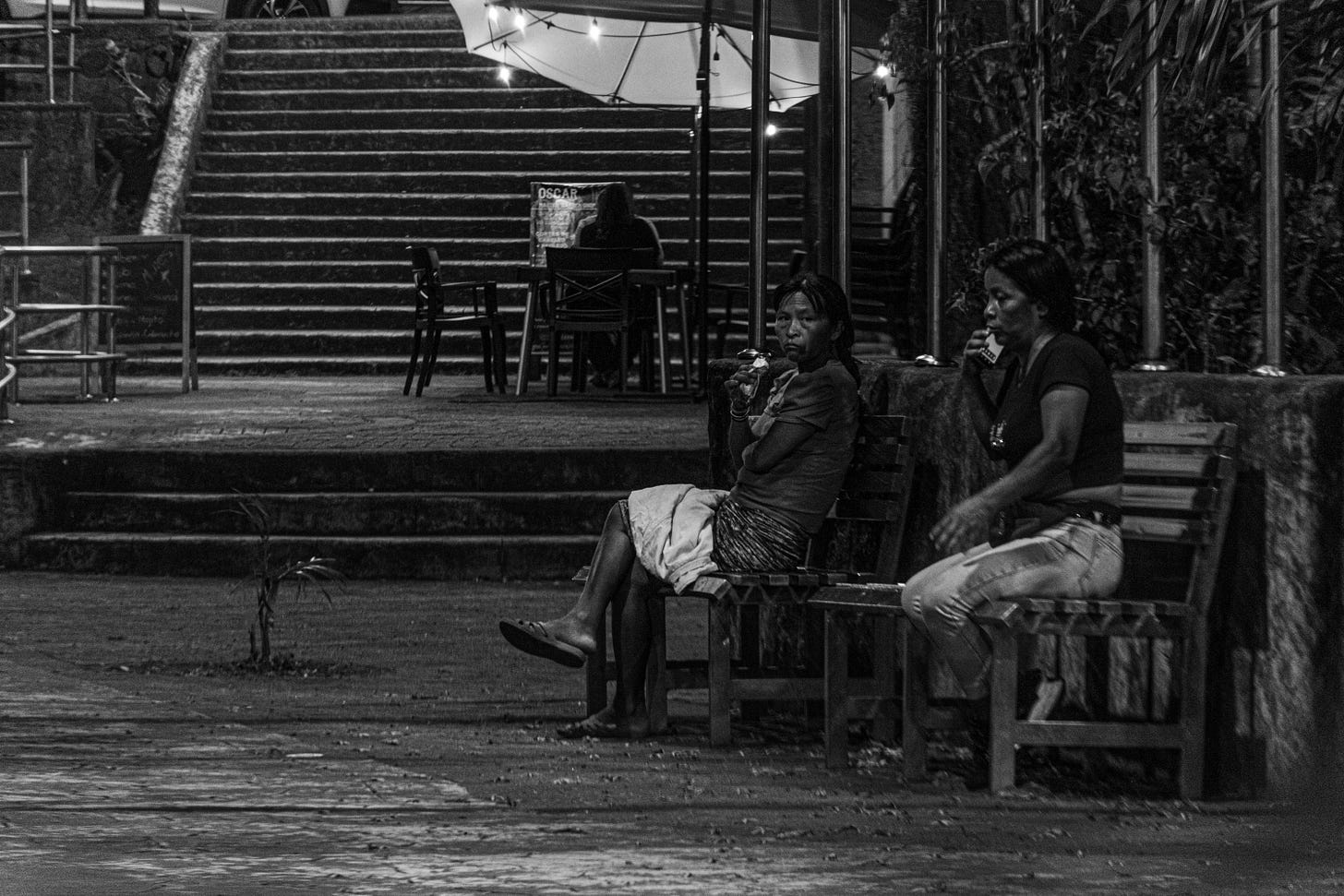
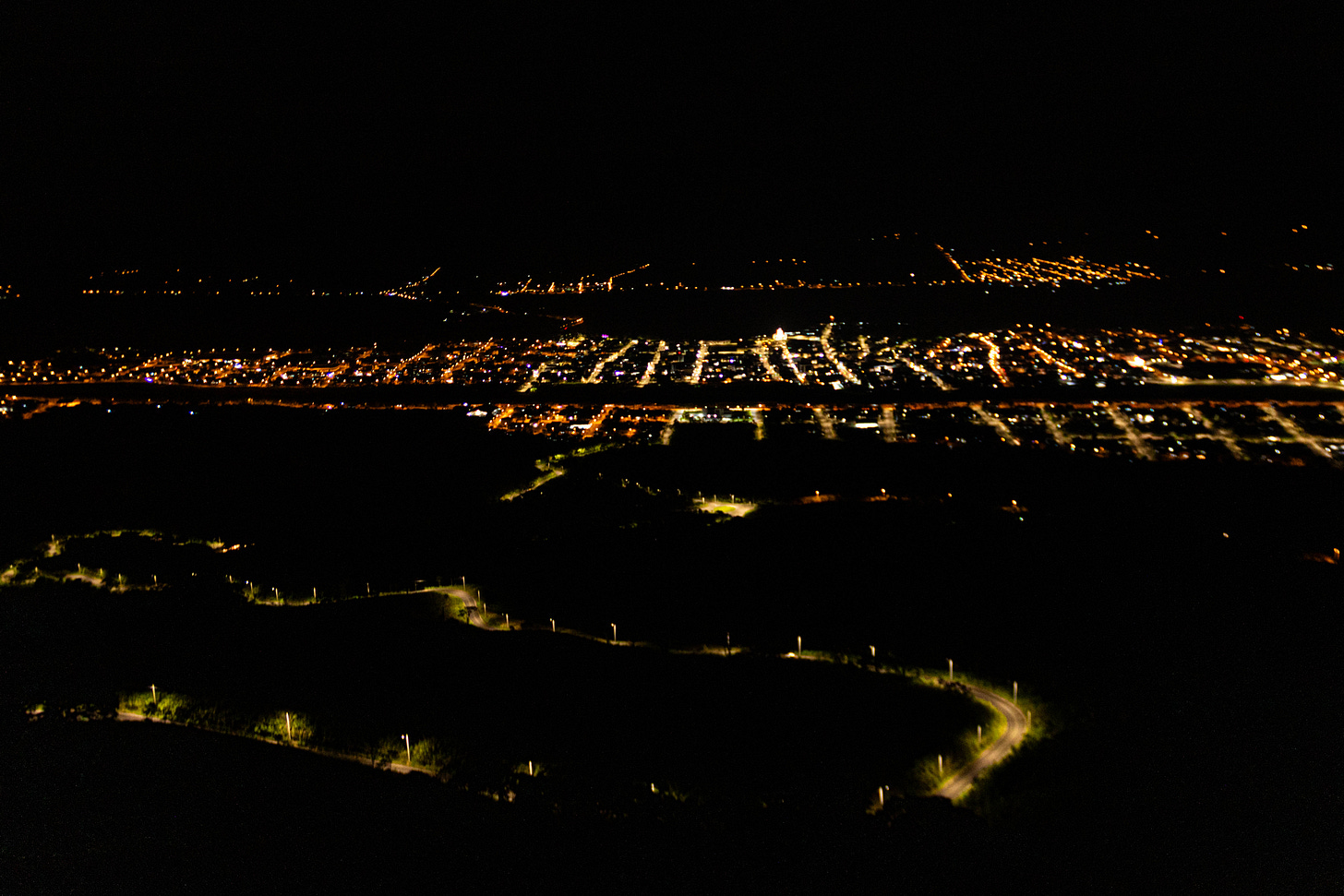

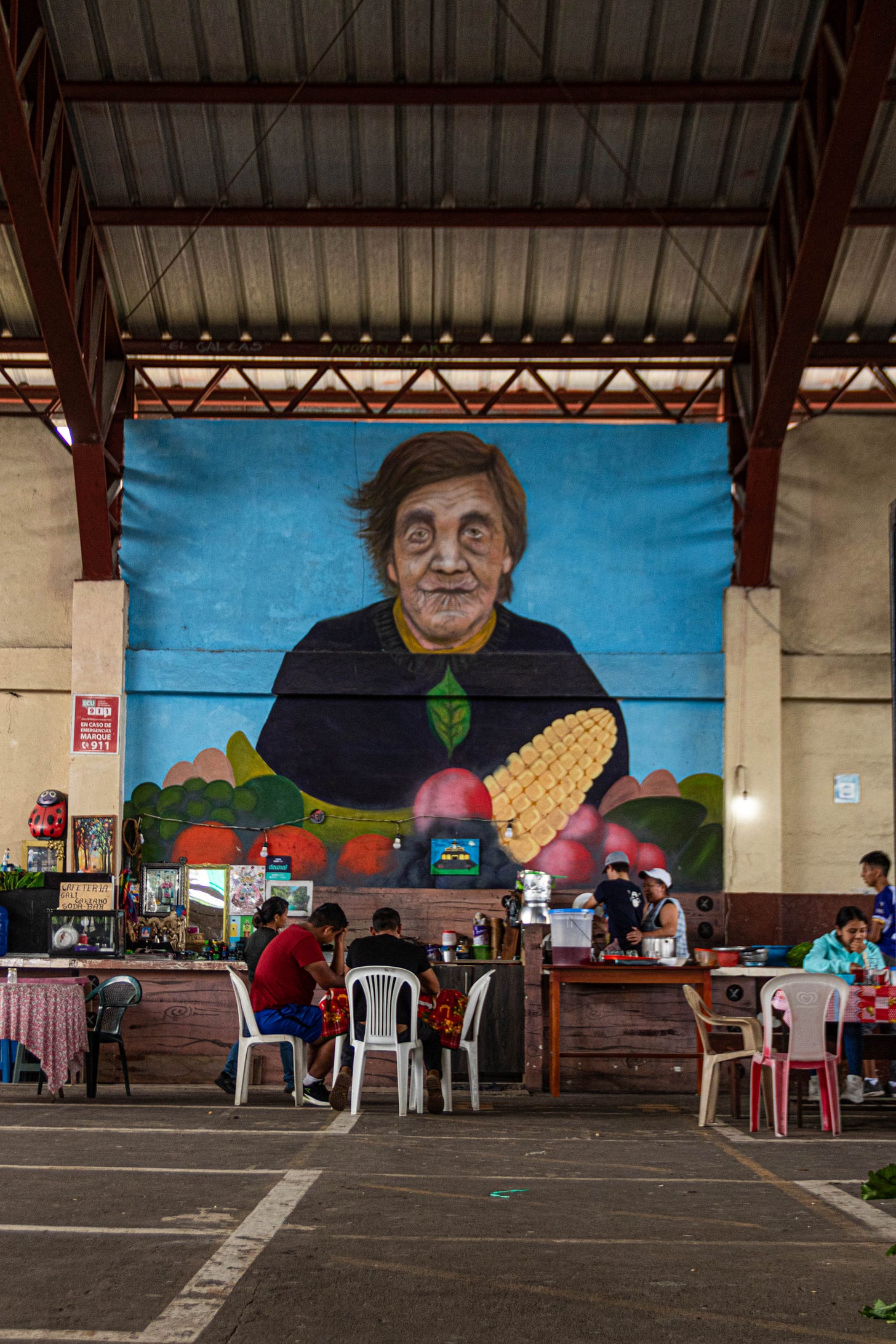

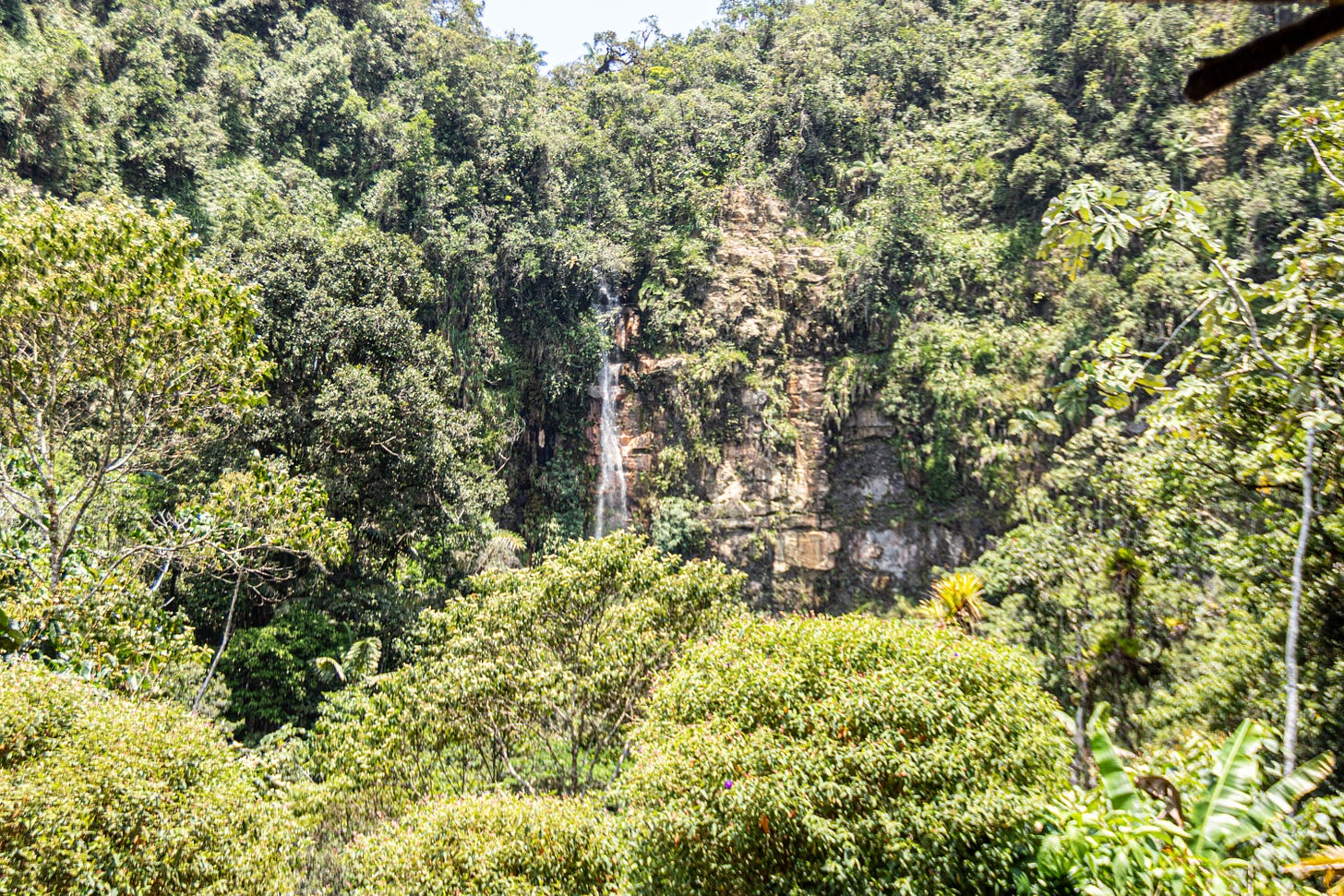




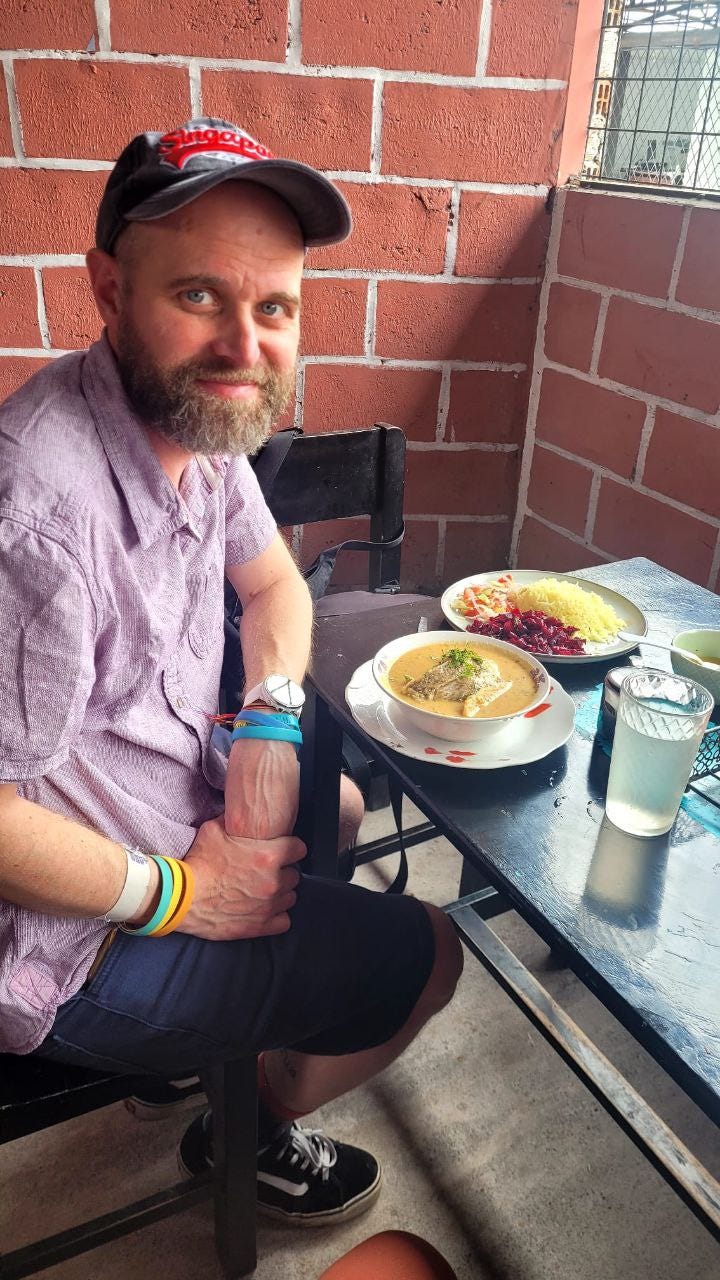


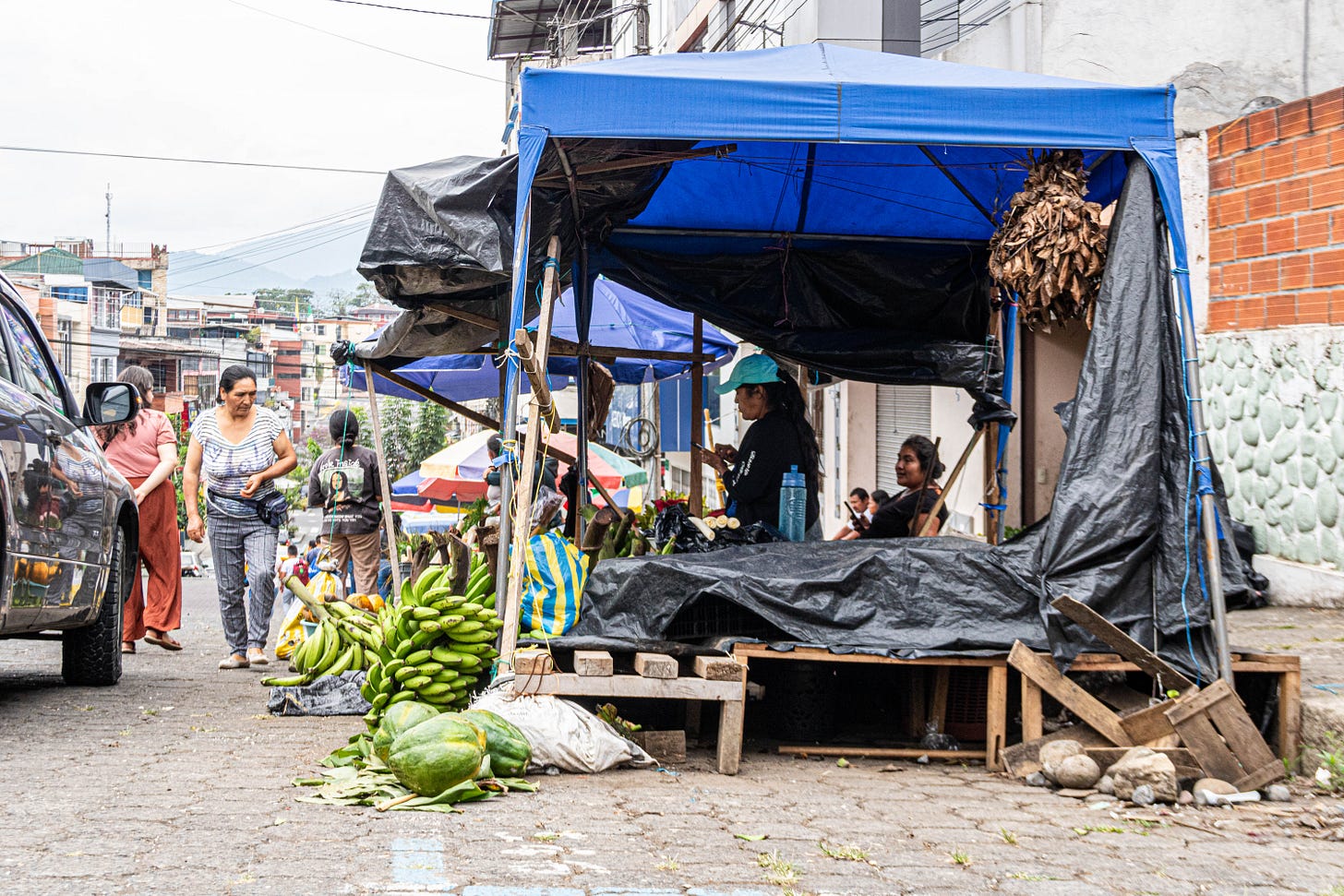


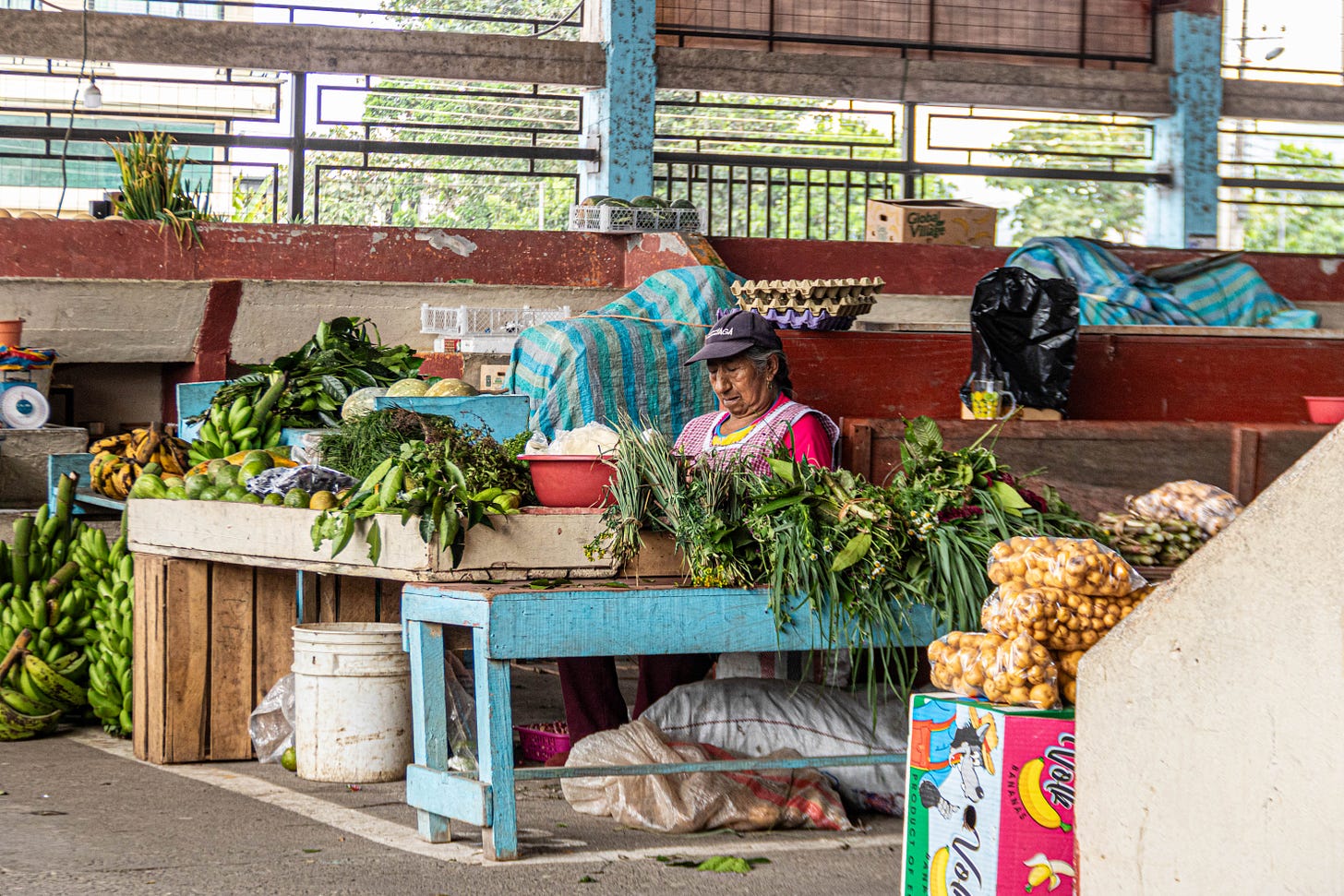


Hi Flavio, I would love to see some maps of where you have travelled, you are a bit like the song “I’ve been Everywhere”. That market reminds me of one we saw in New Guinea where there is one major fruit. Ring sold, yours was bananas and in New Guinea it was Betel Nut which is supposed to be banned, but not the case where we were.
The shots of the lake are remarkable-- the depth of it feels infinite, even in the photos. There's something very profound about it.